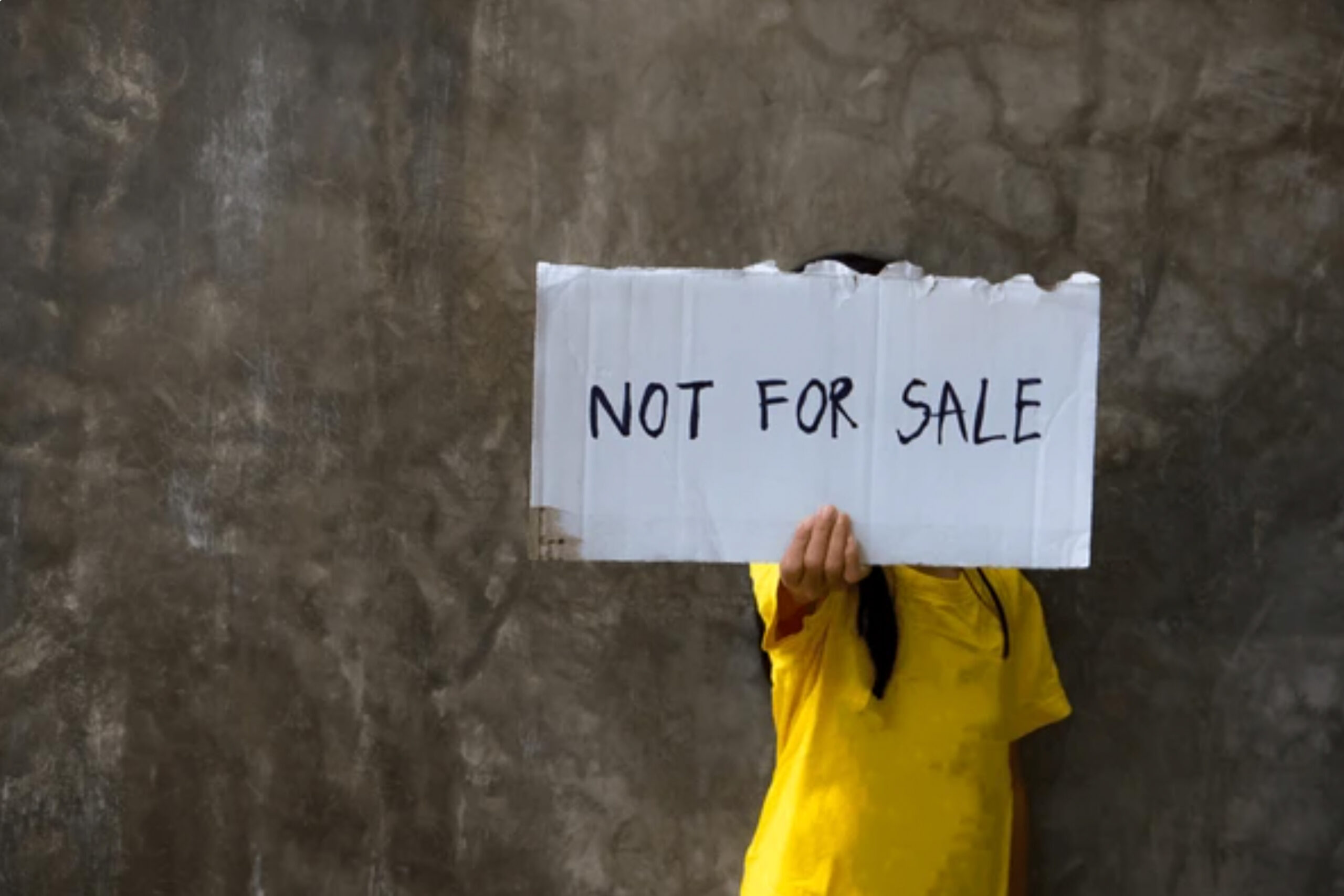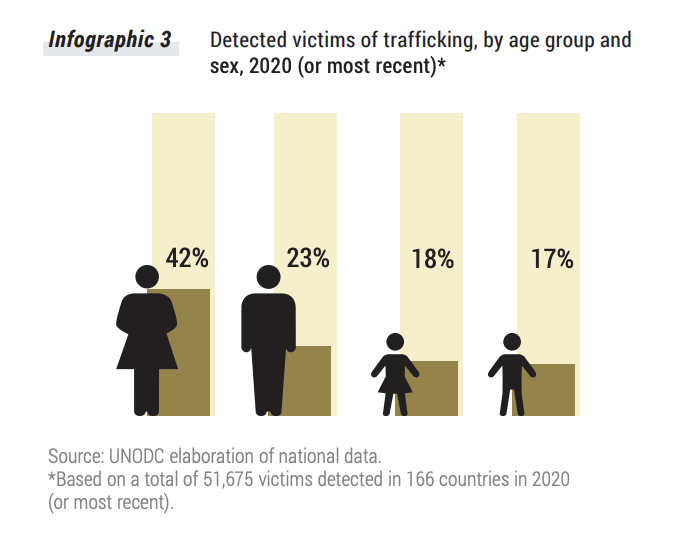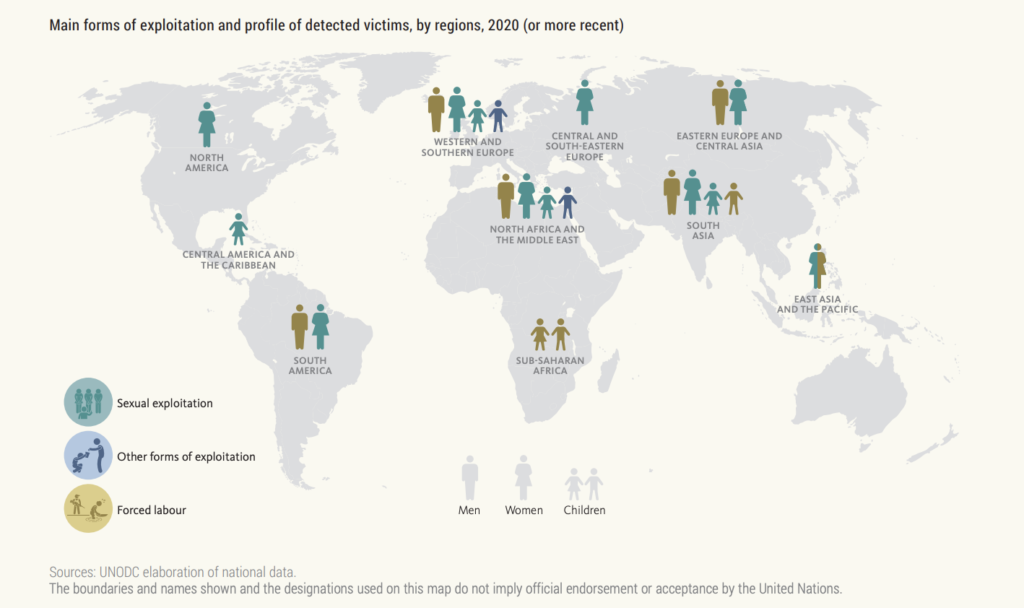
The right to live a life of dignity and safety is enshrined in international human rights principles. Human trafficking represents a profound violation of human rights, particularly affecting girls and vulnerable individuals. This abhorrent practice denies victims their basic freedoms and subjects them to forced labour, sexual exploitation, and abuse. This blog will shed light on and bring attention to the pressing issue of trafficking, including its impact on children.
Given that one in three victims of human trafficking is a child, this year’s theme for the United Nations’ World Day against Trafficking in Persons on July 30th, 2024 focuses on just that – Leave No Child Behind in the Fight Against Human Trafficking.
“Human Trafficking is the recruitment, transportation, transfer, harbouring or receipt of people through force, fraud or deception for exploitation. In every region of the world, traffickers exploit vulnerable women, girls, men, and boys of all backgrounds for profit.”
United Nations Office on Drugs and Crime (UNODC)
According to the UNODC’s Global Report on Trafficking in Persons (GLOTIP), children are twice as likely to face violence during trafficking than adults, with girls making up for 60 per cent of detected trafficking victims.
Children experience multiple forms of trafficking, such as coerced labour, criminal activities, begging, illicit adoption, sexual exploitation, dissemination of abusive online images, and even recruitment into armed groups. There are many different factors that contribute to child trafficking, such as poverty, the lack of support for unaccompanied adolescents in the face of increased migration and refugee movements, armed conflicts, pandemics, dysfunctional home situations, and the absence of parental supervision.
The UNODC’s Blue Heart Campaign raises awareness of human trafficking and its impact on people and society and encourages involvement from governments, civil society, the corporate sector and individuals alike to inspire action and help prevent human trafficking.
Source: The Blue Heart Campaign, UNODC
Social Media’s increasing influence on Human Trafficking Trends
Social media has significantly contributed to the rise of human trafficking by providing traffickers with easy access to potential victims and a platform for recruitment. Through anonymous profiles and extensive networks, traffickers exploit vulnerabilities, especially among young people, enticing them with false promises or opportunities. Effective regulation, awareness campaigns, and technological solutions are crucial to combat this growing problem and protect vulnerable individuals from exploitation facilitated by digital platforms.
Journal of Human Trafficking
If you are interested in finding out more, The Journal of Human Trafficking supports the greater understanding of human trafficking by publishing diverse scholarship on a range of topics.
Read our collection of free-to-view academic articles
We have curated a list of seven temporarily free-to-view articles from Third World Quarterly (TWQ) and Central Asian Survey (CAS) to help with a better understanding of the causes and effects of human trafficking:
- The trafficking of narcotics, arms and humans in post-soviet central Asia: (mis)perceptions, policies and realities, Nicole J. Jackson, Central Asian Survey, 04 Aug 2006
- Violence and exploitation of children in Tajikistan, Robin Haarr, Central Asian Survey, 06 Aug 2006
- Child Trafficking, Child Soldiering: exploring the relationship between two ‘worst forms’ of child labour, Carl Conradi, Third World Quarterly, 02 Sep 2013
- The relationship between human trafficking and child recruitment in the Colombian armed conflict, Mónica Hurtado, Ángela Iranzo Dosdad, Sergio Gómez Hernández, Third World Quarterly, 11 Dec 2017
- Criminogenic patterns in the management of Boko Haram’s human displacement situation, Medinat A. Abdulazeez &Temitope B. Oriola, Third World Quarterly, 14 Sep 2017
- Enforcing labour rights of irregular migrants in Indonesia. Wayne Palmer &Antje Missbach, Third World Quarterly, 08 Oct 2018
- Brahmanical patriarchy and the politics of anti-trafficking and prostitution governance: from colonial to contemporary India, Jaffer Latief Najar, Third World Quarterly, 19 Jan 2023
The articles will be available temporarily as free-to-view until the end of August 2024.





